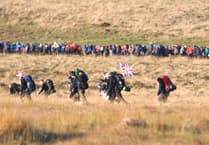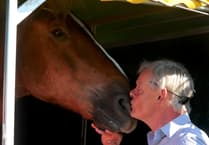There is renewed hope for a Dartmoor summer visiting bird on the brink of extinction.
Dartmoor farmers, RSPB, scientists and the Our Upland Commons Project have joined forces to support whinchats by restoring the grassland habitats in the unenclosed uplands of Dartmoor, a last stronghold in the South West.
Smaller than a robin, whinchats have striking plumage with a noticeable white eye stripe and orange throat and chest. The red-listed (most endangered) bird has declined in the UK by 60 per cent in the past 20 years, confining it to the marginal uplands of Scotland, northern England, central Wales, the Isle of Man, Exmoor and Dartmoor.

A new RSPB report highlights actions to help to maintain breeding populations in Dartmoor. Dr Robert Hawkes and Helen Booker used a 1979 Dartmoor-wide breeding bird survey to explore why whinchats have now disappeared from some areas but not others.
Robert, an RSPB conservation scientist, said: “In this population, steep-sided valleys, with few trees, away from intensive enclosed farmland are better for whinchats. Common land can be perfect with the appropriate grazing levels. Mixed bracken, heather and bilberry field-layer is also favoured. It is great that action is being taken, but more is urgently needed to understand if this can help the recovery of this upland breeder.”
This work is part of a £3m project Our Common Cause to secure the future of upland commons in England. Led by the Foundation for Common Land with 25 partners and funding from the National Lottery Heritage Fund, the Esmée Fairbairn and Garfield Weston Foundations, it proves common land is vital for nature, archaeology, climate, wetlands, trees and access, alongside livestock production.
Project officer Tamsin Thomas said: “Commoners and landowners are already acting on the findings. On Holne, common land owner, Kevin Cox, and farming commoner, John French, have planted 100 trees in bracken round a rewetted valley mire. The trees are protected from grazing animals using cactus guards.”
Holne and Harford and Ugborough commoners are ensuring pesticides to protect livestock from tick-borne diseases do not affect dung beetle which can be eaten by whinchats and beetles, flies, spiders, moths, bees and ants.







Comments
This article has no comments yet. Be the first to leave a comment.